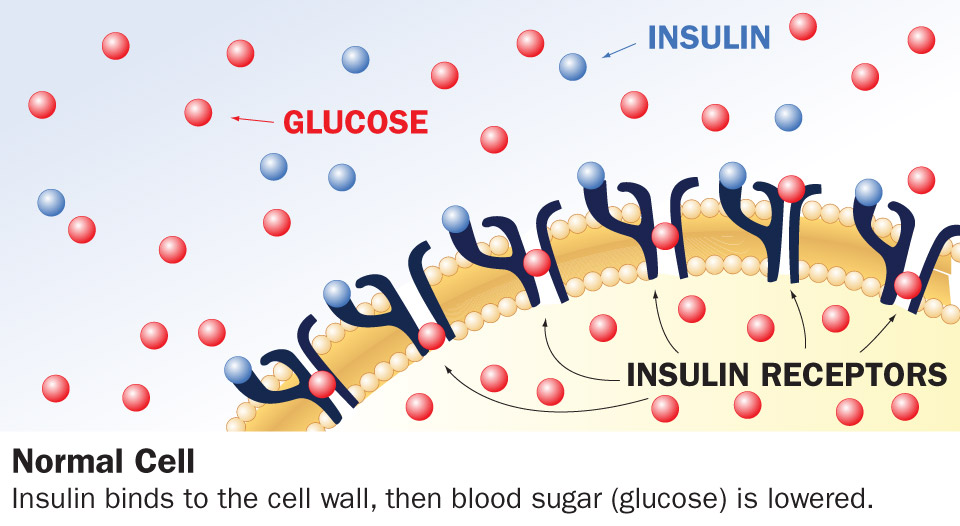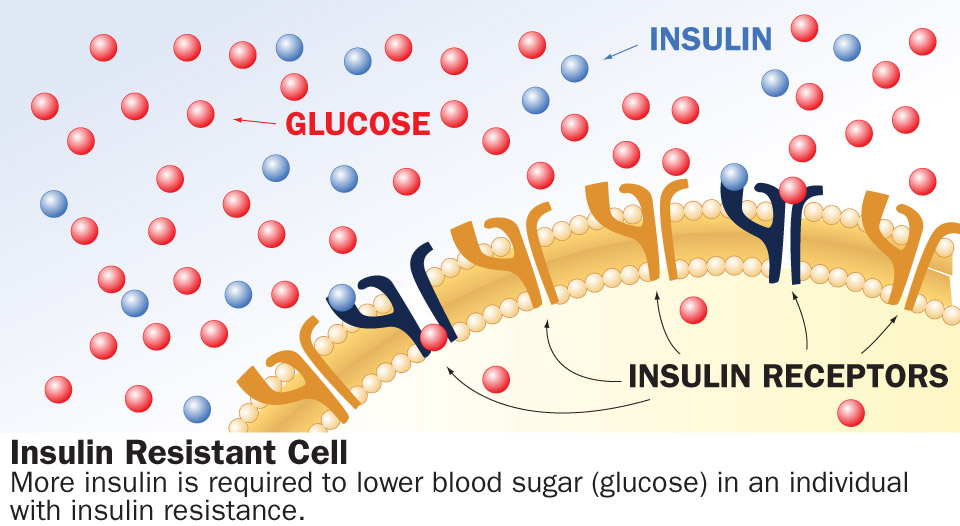No products in the cart.
Menu
Menu
Menu
About 60% of American adults have prehypertension (diastolic above 81-90) or hypertension (diastolic above 90).
Why is there concern over high blood pressure? When blood is pumped from your heart, normally it travels through healthy, supple arteries. With hypertension, the force on arterial walls is abnormally increased. Over time, this leads to stiffening of arterial walls, further increasing blood pressure and leading to vascular damage. Your risk increases for heart attack, stroke, kidney disease, aneurysms, and retinal disease… without you even knowing!

It is important to monitor your blood pressure regularly. You can buy an inexpensive automatic or manual blood pressure cuff online, at Walmart or locally at Jolley’s Pharmacy).
The most common form of hypertension has been labeled as “essential”, suggesting an unknown cause. However, modern lifestyle factors such as poor nutritional choices, stress, inadequate exercise, abnormal BMI, etc. are really the causes. These root causes should not be overlooked by just taking prescription drugs (a leading pharmaceutical company boasts Norvasc as the fourth biggest revenue-generating drug world-wide). Lifestyle changes address the causes, often making medications unnecessary.
| ANTI-HYPERTENSIVE DRUGS | MOST COMMON SIDE EFFECTS |
|---|---|
| Diuretics: HCTZ (Hydrochlorothiazide), Lasix (Furosemide), Aldactone (Spironolactone), Dyazide (HCTZ and Triamterene) | pancreatitis, jaundice, anorexia, oral & gastric irritation, reduced potassium, nausea, vomiting, diarrhea, lightheadedness |
| Beta Blockers: Toprol (Metoprolol), Inderal (Propranolol), Tenormin (Atenolol), Coreg (Carvedilol), Bystolic (Nebivolol) | fatigue, depression, slow heart rate, congestive heart failure, dizziness, insomnia |
| ACE Inhibitors/ARBs: Lisinopril, Altice (Ramipril), Accupril (Quinapril), Cozaar (Losartan), Benicar (Olmesartan), Diovan (Valsartan), Avapro (Irbesartan) | fluid retention, dizziness, dangerously high levels of potassium, dry cough (Less common with ARBs) |
| Calcium Channel Blockers: Norvasc (Amlodipine), Cardizem (Diltiazem), Verlan (Verapamil) | dizziness, headache, fluid retention, constipation, slow heart rate, runny nose |
As Hippocrates said, “Food is the best medicine…”. Many processed and packaged foods lack nutrition and add sodium. Sodium increases blood volume, which increases blood pressure. Deficiencies in calcium, zinc, magnesium, and vitamins B, C, D, E may contribute to hypertension. Sufficient potassium is especially important, and adopting a DASH II diet (Dietary Approach to Stop Hypertension) significantly reduces high blood pressure.
Exercise increases the heart’s efficiency and vascular tone. Going for a 10-20 minute walk can lower blood pressure for up to 11 hours! Achieve at least 30-45 minutes of continuous exercise per day (should include cardio) and aim to be active at least 2 hours every day. Take the stairs, walk on your lunch break, explore hiking trails—the options are endless!

Improving your BMI to a healthier number can make positive changes on your blood pressure. Loosing just 10-20 pounds can bring blood pressure down to normal levels.
Caffeine is a stimulant—it makes your arteries stiffer and increases your heart rate. Switch to decaf or green tea to improve health and lower blood pressure. Also, be aware that some medications may contain caffeine.
All forms of tobacco contribute to hypertension. Seek help in quitting with resources like quitassist.com, nicotine patches or nicotine gum. Having support will help you be successful in quitting.
It may be best to eliminate alcohol completely if you have hypertension because alcohol can increase the severity of hypertension, decrease the effectiveness of drugs, and interfere with magnesium and zinc absorption (minerals important in lowering blood pressure).
Stress increases heart rate and vascular resistance and may adversely influence blood viscosity and blood clotting. Don’t sweat the small stuff! Avoid over-stimulation. Include 20 minutes of stress reducing activities such as meditation, progressive relaxation (focusing on individual body parts from foot to head), yoga, tai chi, deep breathing, aromatherapy, listening to music, etc.

Ensuring good nutrition is the most important thing we do to nurture and maintain our physical existence. Our grandmothers were on to something when they told us “you are what you eat.” Even the father of Western medicine, Hippocrates, understood the great power of nutrition when he counseled, “Let food be thy medicine and medicine thy food.”

Let’s assume you are aware of the health-promoting, disease-preventing qualities of food. The next challenge comes in knowing what the best diet is. Considering all the many diets out there, choosing one might seem like an impossible task. The answer, surprisingly, is not so complicated. Here at Nutriex we would like to let you in on a little secret. Here goes… All healthy diets are basically the same! Look at the list of popular diets and see for yourself.
Replaces “bad carbs” and “bad fats” with “good carbs” and “good fats.” Recommends diets full of vegetables, beans, whole grains, lean meats, nuts and oily fish.
This National Heart Lung and Blood Institute recommended diet is rich in potassium, magnesium, calcium, fruits, vegetables, low fat dairy, fiber, lean protein (poultry, fish and nuts). The DASH II is low in fat, red meat content, sweets, and sugar-containing beverages.
A diet high in dietary fiber, low in saturated fat and high glycemic carbohydrates.
Proven to dramatically decrease blood pressure, cholesterol, and triglycerides. Recommends 11 vegetable and fruit servings per day and even vegetables for a “main course”. Skim dairy, lean poultry, fish, and whole grains are emphasized.
Centers on a “40:30:30” ratio of calories obtained daily from good carbs, proteins and fats respectively. In lay terms, “eat as much protein as the palm of your hand, as much non-starchy raw vegetables as you can for the vitamins, enough carbs to maintain mental clarity, and enough monounsaturated oils to keep feelings of hunger away.”
Centers around game meats, fish, vegetables, fruits, roots, and nuts; and excludes cultivated grains, legumes, dairy products, salt, refined sugar, processed oils, etc. (which were not available to cavemen/women).
Emphasizes abundant plant-derived foods (fresh fruit as the typical daily dessert), olive oil as the principal source of fat, dairy products (principally cheese and yogurt), and fish and poultry consumed in low to moderate amounts. Zero to four eggs are consumed weekly. Red meat consumed in low amounts and wine consumed in low to moderate amounts.
Advocated to reverse heart disease, emphasizes extremely low fat, minimal to no animal-based foods: no dairy unless non-fat variety. Unlimited fruits, veggies, beans, peas, lentils, whole grains. Egg whites are OK. Red meats, poultry and fish are not recommended. Basically a low-fat lacto-ovo vegetarian diet.
Is cancer one of those terrible things that just happens? A random occurrence over which we have no control? If stricken, is our only hope to rely soley on aggressive medical interventions including radiation, chemo therapy, drugs, and surgical procedures? Fortunately, the answers are: no, no and no!

In the continual, amazing replication of your body’s 30 trillion cells, you also produce imperfect, pre-cancerous cells. These mini-mutated cells are in turn recognized and removed by a system of cancer recognition genes. Otherwise, cancer can occur. This potential to develop cancer is present in each one of us every day. The internal environment which we maintain within our cells, tissues and organs determines whether cancer cells can multiply and develop, or whether they are eliminated.
Refined sugar and flour lead to dramatic spikes in our blood glucose. This then leads to an increase in insulin levels and another hormone called “insulinlike growth factor” or IGF. Research indicates that peaks of insulin and IGF stimulate growth of cancer cells and also their capacity to invade neighboring tissues. Simply put, sugar and white flour feed cancer.
Fruits and Vegetables are packed with cancer fighting nutrients that include antioxidants, such as carotenoids, flavonoids, natural vitamin C and E, and folic acid.
Feeding livestock (including poultry) corn rather than grass has changed the composition of fats in meats and animal products to contain high levels of omega-6. Omega-3 and omega-6 fatty acids compete biochemically in our bodies. Omega- 6s trigger inflammation and promote fat storage (which both promote cancer cells) while omega-3s reduce inflammation and limit the production of adipose cells (fat). Routine use of hormones and antibiotics to promote unnaturally rapid growth (and increase profits) is actually unlawful in most developed countries.
The explosion of household chemicals and other agents into our lifestyle occured mainly in he 1950s, ‘60s, before the creation of the Environmental Protection Agency. For a brief review of some of these chemcial agents, please refer to the chart below.
The incidence of all 8 of the most common forms of cancer, (e.g. breast, prostate, colon) are seriously elevated in obese populations. Unnatural adipose by itself increases systemic levels of inflammation.
Healthy vascular function including micro-circulation to every tissue and organ deterimines optimal delivery of nutrients and is dependent on regular exercise, especially cardio.
More people are living longer and cancer rates are directly correlated to age. As life prolonging technologies and drugs have been developed, a net effect for our country is a rapidly increasing over-70 population (often unhealthy) with greater susceptibility to cancer. A rapidly growing number of patients are now experiencing two and even three types of primary cancer.
This is the key-dietary recommendation for you to reduce your risk of cancer. Five is a good start; 10 servings a day is very good.
Eat the right type of fats by increasing the intake of omega-3 fatty acids. Foods high in omega-3 include: salmon, flaxseed/canola oils, tofu, walnuts.
Buy organic produce produced locally and in season. Peel off the skin or remove the outer layer of leaves of some produce. Reduce intake of animal fat, meat, eggs, cheese as pesticides are concentrated in animal products.
Note: The possible presence of pesticides in fruits and vegetables should not deter you from eating a diet high in these foods. Wash them well. The concentrations in fruits and vegetables are much lower than the levels found in animal fats, meat, cheese, whole milk and eggs! Organic foods are often better but not if less fresh, too expensive, etc. The variety of anti-oxidants in fruits and vegetables help your body eliminate possible pesticide effects.


Chronic inflammation involving all tissues and organs, often known to the individual, is the common culprit of most prevalent forms of cancer. This accumulative inflammation is definitely a result of lifestyle choices, explaining why some cultures have very low cancer rates, while industrialized populations often suffer from high cancer rates
There are multiple pathways by which exercise can stimulate health and decrease cancer risk. What you do is not as important as consistently excercising. Get out and move! Be vigorous! Whether martial arts, a brisk walk, a morning jog, swimming, cycling, aerobics, skiing, dancing or working in the yard, all forms of provide great gains in cancer prevention.
Anxiety and depression (including their milder forms) have become the blockbuster conditions/diseases of the 21st century. Their expenditures now rival the costs of treating heart disease, obesity and diabetes, or cancer. Contributing factors are many. Experts point to a modern hectic lifestyle, struggles in personal relationships, money pressures, disillusionment relating to our institutions, deterioration in nutrion, sleep, and exercise patterns, preoccupation with electronic media, and other causes. Mild depression or anxiety can be nothing more than the lowered metabolic state, which is characteristic of sedentary populations. In other words, low mood and low metabolism often go hand in hand.

While anti-depressant drugs and other psycho-pharmaceuticals have enjoyed almost runaway popularity in the last 15 years, the prevalence of anxiety and depressive disorders have increased dramatically. Side effects and the long term influence of the psycho-pharmaceuticals have not been adequately studied and raise serious questions, especially when prescribed for young people. On the other hand, natural and holistic treatments have been rarely employed by physicans, yet these methods have repeatedly demonstrated superior outcomes.
Exercise is fundamental to homo-sapiens’ mental health not just physical health. Exercise boosts blood flow and brings nutrients to the brain, which accounts for an astonishing 20% of the body‘s blood flow (while accounting for only 2% of your body’s weight). Numerous studies comparing exercise and antidepressant drugs reveal that exercise is more effective in relieving anxiety and depression long-term (and without negative side effects like weight gain, restless leg syndrome, and reduced sex drive).
If obese, improve your BMI gradually. Obesity is associated with increased systemic inflammation, pre-sleep apnea/snoring, poor posture, low back pain, and other conditions which contribute to stress and anxiety.
Aim to exercise daily or even twice daily with emphasis on achieving cardio fitness. Find a way to get active and stay active. Join group classes like yoga, spinning, step or water aerobics at your local gym or find local walking/hiking, riding, or running clubs. Recruit co-workers, friends or neighbors and schedule times to workout. It’s harder to cancel when you are meeting some one. Convenient cardio at home is often the best. Working out early morning or before a well-earned supper is recommended.
Stay properly hydrated, and avoid too much caffeine (which is a diuretic). The brain is 80% water. Being dehydrated makes it harder to think!
Stress is often nothing more than over-stimulation. Stress is amplified or diminished based on attitude. Remember, stress hormones contribute to weight gain, hypertension, poor sleep habits, and even glucose intolerance (pre-diabetes).
Scientific studies are now pointing to several foods which are associated with favorable mood and prevention of depression. While many questions remain about the effects of food on mood, experts generally agree that the following foods are helpful for a healthy mind:
People who are depressed often do not eat a balanced diet rich in recommended nutrients. Nutrients such a vitamin D, B12, omega-3 fatty acids, and many phyto- chemicals are valuable for improving mood. To comple- ment food choices and increase anti-inflammatory benefits, we recommend Nutriex Sport or Health and Nutriex Omega-3/Fish Oil (twice a day). Our clinical experience with Nutriex often reveals mood improve- ment. Similar products may work as well.
The conversion of vitamin D to its active form requires sunlight. Emphasize outdoor light exposure combined with long walks. Don’t stay indoors in the winter. Vitamin D deficiency has been linked to depression (including seasonal affective disorder) in several studies. If you are unable to get natural sunlight explore the possibility of light therapy (www.sunbox.com).
Nutraceuticals for mild depression or anxiety may be effective. Typically, natural remedies have fewer side effects than psycho-pharmaceuticals. Natural treatments can be less expensive, more geared towards prevention, and some are backed by solid research. Many physicians recommend that you consider potential natural remedies with the help of a healthcare professional. Some nutraceuticals to be considered are: 5-HTP, L-tryptophan, SAMe, valerian, panax ginsing, DHEA, fish oil, and GABA.
There’s nothing more American than baseball, apple pie, and… developing diabetes. The activity and eating patterns of American society have taken away the need for daily physical exertion in our lives and have placed right under our noses the largest portion of high calorie, poor nutritive foods that has ever existed in human history. Because of our current culture, it should not be surprising that 1.6 million adults are diagnosed with diabetes every year (National Diabetes Information Clearing House, 2007).
Type II Diabetes doesn’t develop overnight. It takes years and often decades of what is called insulin resistance to exist before diabetes develops. When the body’s cells are resistant to insulin, the pancreas has to secrete higher and higher amounts of insulin to transport glucose out of the bloodstream to the body’s cells. Eventually, even the high amounts of insulin can’t keep blood glucose levels normal and diabetes is diagnosed.


A poor diet, stress, and a lack of physical activity all contribute to an increased waistline. Adipocytes, or fat cells (particularly around the waistline), secrete multiple hormones and other inflammatory factors that contribute directly to insulin resistance. Many of these same factors also make the body’s blood vessels unhealthy, resulting in high blood pressure and heart disease
If obese, improve your BMI gradually. Obesity is associated with increased systemic inflammation, pre-sleep apnea/snoring, poor posture, low back pain, and other conditions which contribute to stress and anxiety.
Aim to exercise daily or even twice daily with emphasis on achieving cardio fitness. Find a way to get active and stay active. Join group classes like yoga, spinning, step or water aerobics at your local gym or find local walking/hiking, riding, or running clubs. Recruit co-workers, friends or neighbors and schedule times to workout. It’s harder to cancel when you are meeting some one. Convenient cardio at home is often the best. Working out early morning or before a well-earned supper is recommended.
Choose low calorie-high nutritive foods, and reduce portion sizes.
This alone can decrease your risk of developing diabetes. The less processed your foods are the more fiber they are likely to have.
For an individual who weighs 150 lbs, that is 10 lbs. Just this small amount of weight loss can get you out of the danger zone of developing diabetes.
Daily exercise can help both prevent and control diabetes. This effect is seen even when the exercise is not accompanied with weight loss. Choose a form of exercise you like and stick with it.
Park in the far end of the parking lot. Use a broom or rake instead of a leaf blower. Go for a walk after every meal.
Results can be achieved without a gym membership. Always take the stairs and challenge yourself to climb them faster from week to week. Purchase an exercise ball from to use for daily home workouts.
Start with achieving moderate weight loss (5% of your body weight). For an individual who weighs 175 lbs, that is just 9 lbs of weight loss. Just this small amount of weight loss can get you out of the danger zone of developing diabetes.
Play or listen to music. Take a walk or meditate by yourself. Turn off the iPod during your exercise.
Help a family member or close friend with a project. Volunteer in a cause you are passionate for.
Try to drive less. Shop locally. Spend less than you earn. Eliminate clutter.